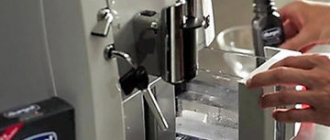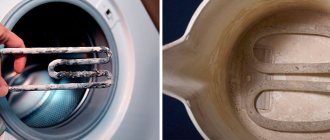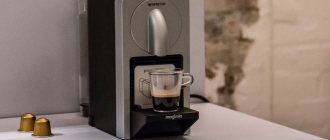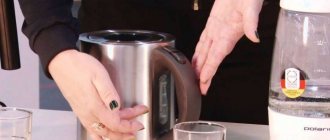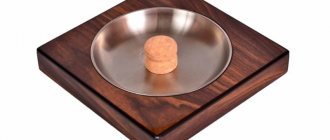Saeco coffee machines are quite common in our country. They are most popular in catering establishments, offices and other places where they are actively used. Despite the high quality and reliability of such devices, they also tend to break down, since during active use they are subject to serious loads.
In order to prevent malfunctions and serious damage, maintenance measures should be carried out for preventive purposes. These include washing and cleaning. At affordable prices, repairs of Saeco coffee machines in Kyiv are carried out by the Brayval-coffee service center.
Features of Saeco coffee machines
The creators of Philips Saeco coffee machines tried to ensure that the interests of everyone were taken into account. Among the range of products, there is room for both simple and inexpensive products and more advanced and expensive models. Despite this, there are several indicators that the price indicator does not apply to. Any of the Saeco coffee machines has the following qualities:
- modern decoration and design;
- simple and intuitive controls;
- reliability and ergonomics;
- a wide choice of programs.
Table-review of purchased decalcification products
There are many products on sale that remove scale from various types of coffee machines. For ease of comparison, the characteristics of some common tools are summarized in a general table.
| Name | Type | Peculiarities | Package volume |
| Top house | Liquid or tablets | Manufactured taking into account the recommendations of manufacturers, made in Germany | 0.25 liters of liquid for two uses or 8 tablets per pack for 8 uses |
| Topper 3006 | Liquid | Manufactured taking into account the recommendations of manufacturers, made in Germany | 0.25 l for two uses |
| DeLonghi DLSC500 | Liquid | Optimized for DeLonghi equipment, but also suitable for other brands, made in Italy | 0.5 l for 4 uses |
| Philips-Saeco CA6700/00 | Liquid | It has a soft action, protects against corrosion, made in Germany | 0.25 l for one cleaning cycle |
| Melitta | Liquid or powder | Features a mild action, made in Germany | 0.25 l liquid for five cleanings or 2 sachets for two uses |
| Bosch TCZ8002 | Pills | Instant tablets, made in Germany | The package contains three tablets for three uses |
| Filtero | Pills | Instant tablets, made in Germany | Pack contains 4 tablets for four uses |
Top House
Topper 3006
DeLonghi DLSC500
Philips-Saeco CA6700/00
Melitta
Bosch TCZ8002
Filtero
Why does scale form?
All the good things that a Saeco coffee machine has can be ruined by just one thing – scale. Like any equipment that requires heating water to operate, coffee machines are also susceptible to this negative factor.
Water is the main cause of scale formation, but it’s not the liquid, but the impurities that are present in it. Salts, trace elements, sulfates, nitrates, the chain can be continued for a long time, because in each area this set is completely individual. Not only tap water is dangerous, but also purchased water; it does not protect the device, but only delays the inevitable.
Why delete
At first, limescale does not cause any inconvenience. But the more actively you use the coffee machine, the more it becomes. Over time, the accumulation of scale leads to problems with water supply - particles of limescale clog the water flow channels, and it flows poorly. At the same time, the capacity of the boiler is reduced and areas inside the device are blocked.
Note that those parts of the machine in which water stagnates are most susceptible to the appearance of lime. The narrower the diameter of the tubes for the flow of liquid and the more bends, the higher the likelihood of scale formation.
To avoid breakdowns and increase the service life of equipment, it is recommended to periodically carry out comprehensive cleaning - decalcification.
How to Know When Cleaning Is Needed
The frequency of cleaning a Saeco coffee machine is a purely personal matter. It is very stupid to wait for any special signals, because a stage may come at which ordinary cleaning is no longer sufficient, and you will have to make expensive repairs.
If you know that you have hard water in your area, then monthly preventive measures are a must. If it is soft, then a six-month cleaning frequency is quite acceptable.
But those who neglected the timely procedure may notice the following problems:
- the finished coffee began to flow out more slowly and with less pressure;
- the operation of the machine is accompanied by an unusual hum;
- a white sediment appeared at the bottom of the cup of drink.
These are the very critical signs that indicate that your Saeco coffee machine requires cleaning.
Getting rid of coffee oils.
Cleaning coffee oils is an equally important step towards flawless and long-lasting operation of your miracle machine. Fatty deposits, a by-product from grinding coffee beans, form on the brewing system of the device and interfere with the process of natural drainage of water. Most of all, coffee clusters “love” the filter (strainer) and the “paths” along which the drink gets into the cup. It is recommended to clean all this first.
Turn on “cleaning”
Advanced coffee machines are equipped with an automatic program for getting rid of coffee deposits. And they are even able to notify you about the need to launch it. The machine will perform all washing operations itself; your role is to provide it with effective means for dissolving fats - cleaning tablets. They are placed in the compartment for ground coffee and must be completely dissolved during the washing process (this is evidenced by soap scum and whitish-tinged water appearing from the outlet for the finished drink).
Which tablets are better
The best products for dissolving coffee deposits in their category are considered to be cleaning tablets from the famous brands Melitta, Bosh, and Jura. Ideal cleanliness and protection against the formation of grease deposits are guaranteed by German two-phase tablets for cleaning the hydraulic system of the German brand Jura.
Manual cleaning
If your unit is not equipped with built-in automatic self-cleaning software, you will have to act independently. A small, nimble brush and a soap solution will help you. If the brewing unit is removable, then the deposit can be seen with the naked eye. Unscrew the filter, clean and carefully inspect the brew strainer: remove the smallest particles of sediment with a needle.
Cleaning methods
The instructions for your Saeco coffee machine describe in detail how to descale it. But if you came here, it may be lost or additional methods and tools are needed.
The Xsmall series has a special automatic cleaning function. She does the washing herself at startup and at the end of the program. If the coffee machine is a little cheaper, then all responsibility falls on the owner.
A good decalcifier (cleaner) is a product purchased at hardware stores. Such compositions are produced by the same companies that make the coffee maker itself. The packaging describes the method of use and dosage, which makes it easier to use.
For those who prefer proven home methods, citric acid can serve as an analogue. This food additive actively fights scale.
Initially, all removable parts of the Saeco coffee machine are washed, after which a solution is made from powder (cleaning agent) and hot water (per 30 grams, 4 tablespoons of liquid). The mixture is poured into the compartment with the same volume of cold water added, after which the program starts. When ½ of the solution has poured out, you need to pause the program so that the second half of the solution can begin thorough cleaning. A 30-minute stop will be enough, after which we complete the task we started. You can get rid of the sour taste by running clean water through the coffee maker a couple of times.
Cleaning other parts
The body of the device should be regularly wiped with a soft damp cloth to remove dust and other contaminants. It is important to promptly drain the liquid accumulated in the pan to avoid the appearance of mold and musty smell. Also, 1-2 times a month you need to wash this part with running water or in a dishwasher at a temperature of no more than 60 °C. It can be reinstalled only after thorough drying.
Compartment for pulp
The pulp compartment must be removed while the machine is turned on. After emptying, rinse it with running water and wipe dry.
If you empty the hopper while the device is turned off, the coffee cycle counter will not reset and the message about the need to empty the container will not disappear from the screen.
Coffee grinder
Cleaning the millstone mechanism is carried out as follows:
- Empty the bean hopper of coffee.
- Activate the grinding mode to get rid of the remaining grains.
- Place the tablet or powder into the hopper.
- Turn on grinding for 5-6 seconds.
- Fill the compartment with grains.
- Prepare 2-3 cups of coffee, pouring the drink down the sink each time.
As a cleaning agent, powder made from food starch is used, which absorbs accumulated fats, or special tablets, for example, Puly grind.
In order for the coffee machine grinders to remain functional for a long time, they must be cleaned regularly.
conclusions
If you follow the recommendations for servicing all components, breakdown of the coffee equipment is unlikely. If you neglect simple principles, you can end up with expensive repairs. Given the low availability of some parts, this prospect is not at all attractive.
If we summarize all the information, we can say the following:
- A coffee machine is a smart device that asks itself to be cleaned. The user does not need to independently monitor this moment. The main thing is to take clean water and set its hardness in the settings. If the device operates on filtered water, the lowest degree of hardness is set and decalcification will be required once a year. Powerful osmotic filters completely eliminate the need for cleaning; then decalcification is carried out with simple clean water, and you can safely refuse to install a filter in the tank of the machine. Ultimately, this approach will be much cheaper than regular decalcification for every 50 liters of waste water;
- Cleaning of scale, coffee oils, fats, and washing of the cappuccino maker is carried out in strict accordance with the instructions. Each car has its own subtleties, I advise you not to neglect this point;
- The choice of cleaning products is entirely up to you. You can take anything, including something quite budget-friendly and not native;
- traditional methods are in the firebox. You break your equipment and go broke on repairs;
- do not delay cleaning if the machine has already shown an indication. The process will take 15-20 minutes.
All budget products for decalcification, cleaning teapots, cappuccino makers can be found at the Melitta brand.

